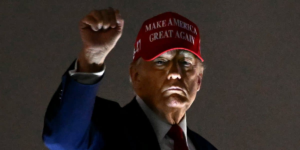U.S. President Donald Trump stated on Monday that Israeli Prime Minister Benjamin Netanyahu has agreed to support a U.S.-proposed plan to end the almost two-year Gaza war. Although the proposal is a major diplomatic achievement, its destiny depends upon whether Hamas will embrace its conditions.
Speaking at a joint press conference at the White House, Trump said that both sides were “beyond very close” to agreeing on a decades-long sought peace deal. While doing so, he also warned Hamas that Israel would have total American support to react aggressively if the organization rejects the offer.
There came out a 20-point plan from the White House along with the negotiations. The plan calls for an instant ceasefire, the freeing of hostages held by Hamas in exchange for Palestinian prisoners being held by Israel, a phased Israeli withdrawal from Gaza, disarming Hamas, and the establishment of a temporary authority under international control.
Trump commended Netanyahu for agreeing to the terms, saying the plan had the potential to “end decades, even centuries, of bloodshed” and bring security, peace, and prosperity across the region. Netanyahu, however, expressed reservations about parts of the plan, namely those relating to Palestinian Authority reforms, which Israel has long been resistant to being in control of Gaza.
Despite the developments, the clinching missing link is Hamas. The group responsible for the October 7, 2023, attack that triggered the war has not been in negotiations. Israeli authorities report that 48 hostages remain with Hamas, 20 of whom are believed to be alive. Reuters reports that a senior Hamas representative told them that Hamas had not read the plan formally and had only read about it in the news.
This was Netanyahu’s fourth White House visit since Trump’s return to office in January, as part of his efforts to solidify U.S.-Israel ties after a string of worldwide Palestinian statehood recognitions at the United Nations last week. Trump mocked those steps as appeasing Hamas, while at the same time seeking Netanyahu’s endorsement for a proposal that leaves the door open—ambiguously—at least to Palestinian statehood.
The peace proposal, crafted by American negotiator Steve Witkoff and endorsed by Trump’s former aide Jared Kushner, proposes a ceasefire followed by the release of all Palestinian hostages within 72 hours in exchange for hundreds of Palestinian prisoners. Israeli forces would then begin to leave Gaza, with an internationally sanctioned stabilization force ensuring security. Hamas would be excluded from governance in Gaza and the Palestinian Authority would have only a limited role at first.
However, Netanyahu has firmly rejected the idea of Palestinian statehood, perhaps the most contentious aspect of the proposal. Sources close to the talks suggest that this issue was a point of contention in his meeting with Trump.

Meanwhile, Israel has escalated its military campaign, threatening to destroy Hamas altogether. The assault has leveled large portions of Gaza, with over 66,000 dead since the war began, Palestinian health authorities reported. Israeli sources estimate that 1,200 were killed and 251 were kidnapped during the initial attack by Hamas.
Trump ended the White House ceremony without taking questions, a break from the spontaneous style of a president who has long entertained journalists with off-the-cuff remarks. For Netanyahu, however, the warm reception was in contrast to the hostile climate he had faced days before at the U.N., where several delegates had walked out on his address in protest.

In the end, however, Trump’s proposal is one of the most ambitious U.S. efforts to date, and its success rests on Hamas’ response—a point that has torpedoed many peace initiatives in the past. Without their cooperation, this proposal can be in danger of meeting the same demise as previous proposals which have collapsed under the weight of distrust and incompatible differences.




